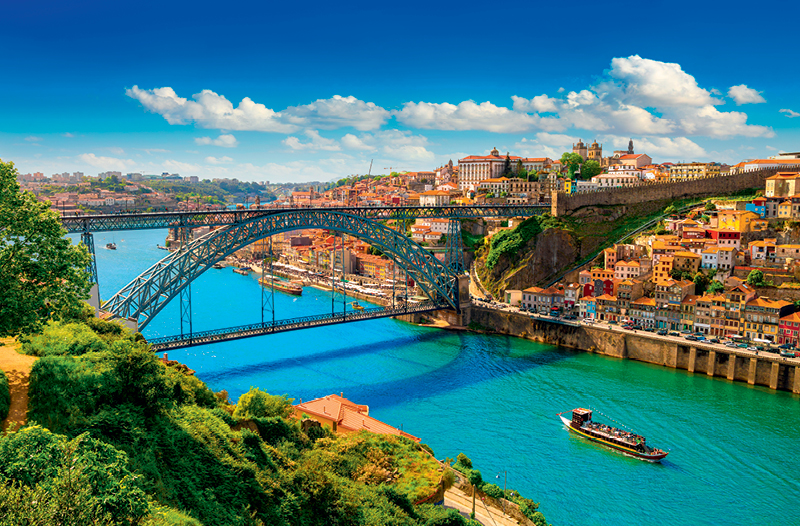
Rise to the Top and Back Again

When he became CEO of Willis almost three years ago, Dominic Casserley, a McKinsey & Co. veteran, made expanding the company’s North American footprint in the large-corporate segment a priority.
To help him do it, he lured Christine LaSala back into the world of insurance brokerage after a 15-year absence.
LaSala, who started working for Willis in July 2014, was named global head of client advocacy last October. In February, she also became chairman of Willis North America, where she works closely with Todd Jones, the CEO for that business.
LaSala might seem an unusual choice to anyone who has followed the most recent arc of her career, during which she led a private neighborhood school in Harlem and then ran the controversial government-funded insurer created to pay liability claims that arose after the 9/11 terrorist attack on the World Trade Center.
Take a broader look at LaSala’s career, however, and you’ll find someone who has demonstrated the unyielding optimism and tenacity necessary to build winning teams from dysfunction. Perhaps most important for Willis, serving large clients was at the heart of LaSala’s career for more than 25 years at Johnson & Higgins, the venerable, white-shoe insurance brokerage that merged into Marsh & McLennan in 1997.
That experience will certainly be called upon when Willis completes its proposed merger with Towers Watson to create a global risk advisory, insurance broking and human capital consulting firm with $8.3 billion in revenue.
With London roots dating to 1828, Willis has long been a power player with large corporate clients internationally. But in North America, its largest market, multinational risks represent just 25% of property-casualty revenue.
This is largely because, in its 25 years in the U.S. market, Willis has been defined by its acquisition of two middle-market giants, Corroon and Black in 1990 and Hilb Rogal and Hobbs in 2008. The newest merger, expected to close by year’s end, should help Willis win a bigger share of the $10 billion in business from North America-based multinational companies by tapping into Towers Watson’s deep relationships in that arena.
The idea that Willis North America should make greater inroads in the large-client space is, as LaSala puts it, “not a rocket science insight,” and it’s not even necessarily new. Willis already has the infrastructure to serve large corporate clients globally, and it’s been investing heavily in analytics. “The only way to get maximum leverage out of all those capabilities is to start driving more large-client activity through them,” LaSala says. “I don’t think Willis North America had necessarily thought about the opportunity in that way.”
LaSala was enticed by the prospect of making the strategy a reality. “The reality is that, at least in the large-client space, our competitors control more of that business than is reasonable to control,” she says, “so Willis has a chance to be on the attack in an exciting way.”
Large multinationals rarely switch brokers, so making headway in the North American market requires a firm belief that, with vision and perseverance, the status quo is eminently changeable.
LaSala was in her early 30s and about eight years into her career at Johnson & Higgins when she set her sights on making partner. “I don’t think I said it out loud,” she recalls in an interview in the Willis office in lower Manhattan. “At that moment it seemed impossible.”
Since its founding in 1845, J&H had never had a female partner, let alone a woman who was also gay. But by the time LaSala made partner, she had proven herself in numerous make-or-break trials. The first, in the mid-1980s, was to lead the large, thriving New Jersey office with a simple mandate: “Try not to screw it up.” In the five years she ran it, the office became one of the brokerage’s most profitable while increasing revenues 200%.
The next test was trickier: The flagship New York office was a troubled operation that no one wanted to touch. With revolving-door leadership, meddling from corporate directors and a host of other problems, it was inefficient and suffused with low morale.
The partners sent LaSala in to see if she could right the ship. She had started her J&H career in the New York office in her 20s, but she was returning as a 40-year-old boss with a conspicuous track record of success. She raised standards, restored confidence and earned deep loyalty. “I came back saying, ‘This is the job in the firm that I want, and I’m not leaving anytime soon, so we’re going to fix this together,’” LaSala says.
By the time she turned around the New York office, her rise to partner had an air of inevitability, never mind the few whispering concerns about bringing a homosexual woman onto the board. In 1992, at the age of 42, LaSala became the first female director in J&H’s 152-year history.
“Being a woman,” says John Keyser, LaSala’s one-time boss and mentor at J&H, “she had to earn her stripes over and over again, and she did. She was the best leader I’ve known, male or female.” Keyser, now a leadership coach, featured LaSala in a book about women and leadership.
LaSala became a role model to Regina Hall and other young women joining J&H during her rise through the ranks. “She broke the mold not only because she was female, but because she showed there was another way to go about building relationships with clients, of getting people to know you and of mentoring people that didn’t mean going out on the golf course,” recalls Hall, who was a young associate when LaSala oversaw the J&H New York office and who later became a managing director at Marsh.
As one of the senior women at Willis, LaSala continues to advise women on advancing their careers. “I have a view of what women need to do on their own to enable their careers, that it isn’t your employer’s job to make your career, but it is your employer’s job to collaborate on the career you want to make,” LaSala says. “I’ve been open to talking very personally and honestly about how I see careers happening in organizations, and I’m perfectly comfortable reflecting on things I wish I’d done differently,” such as getting an advanced degree and networking with other women.
After completing J&H’s two-year associate’s program, Hall initially accepted a position in the firm’s oil-and-gas department, thinking she’d have more success outside the frat-house environment of the New York casualty department. But LaSala urged her to stay, and she did.
“I didn’t want to do it,” Hall recalls, “but she had a plan for what was going to happen if I trusted her and stuck with her. It was the right call.”
LaSala made a point to talk with employees and clients about how she could help them do their job better. She held one-on-one breakfast meetings at which she spoke with employees with leadership potential about their projects, problems and professional development.
“She inspired immense loyalty from people, both employees and clients, because of how she treated people and her consistency,” Hall says.
When she was a partner, LaSala always had a piece of paper taped above her phone with the names of the five clients she would call that week to ask how J&H was doing. “It sounds like nothing, but that rarely happens, and one of the biggest complaints you hear when a broker loses business is that management didn’t care,” says Joseph Peiser, an executive vice president at Willis North America who also worked with LaSala at J&H. “She had a routine of staying in touch with clients with no agenda other than to stay in touch with clients.”
Peiser recalls a time in the 1990s when IBM, a significant client, set the brokerage industry into a frenzy when it announced it would consolidate its fragmented insurance business with one broker. LaSala brought together several dozen of J&H’s best and brightest at the New York Palace Hotel. As the meeting progressed, there emerged a strong feeling the firm was going to lose to Marsh. LaSala told the group she refused to believe they were going to lose, so they’d better get on with their plan for winning. In the end, IBM gave property lines to Marsh and casualty to J&H.
Years later, Peiser recalled that meeting during the nearly five-year nightmare when he and other Marsh executives defended themselves against antitrust and price-fixing charges brought by Eliot Spitzer, then the New York attorney general. In 2009, a judge acquitted Peiser of all criminal charges. [“Facing Down the Bully of Wall Street,” Leader’s Edge, March 2014]
“When I was going through my trial, I remembered her grit and tough-mindedness,” Peiser says. “When faced with a seemingly impossible task, failure was not an option.”
LaSala also offered personal support. “It was clear she cared about what I was going through personally and what my family was going through,” Peiser says. “She was not trying to be superficial about it.”
Superficial is not part of LaSala’s DNA. There’s a certain grit that comes from growing up in Aliquippa, Pennsylvania, a steel mill town near Pittsburgh. Or maybe, to be more precise, there’s a certain grit in those who get out.
The Pro Football Hall of Fame might consider creating a special wing dedicated to the town that produced, among other stars, Mike Ditka, Tony Dorsett, Ty Law and Darrelle Revis.
Joseph and Keith Hyde LaSala had seven children in 10 years, and as the oldest, Christine developed her leadership chops early, organizing her siblings and getting things done. “I was more parent than sibling to my siblings,” she says.
Though they had a traditional household—her father ran his own public relations firm and her mom stayed home—the LaSalas offered their children an alternate route out of the mill town by exposing them to arts, culture and the promise of a college education. Every Saturday the house filled with radio broadcasts from the Metropolitan Opera. After Mass on Sunday, Joseph brought home The New York Times. Two of LaSala’s sisters graduated from Radcliffe and Princeton. For Christine, the choice was a small Catholic school, The College of New Rochelle, about 25 miles from New York City.
Her traditional Catholic parents didn’t exactly celebrate when they learned their oldest two daughters were gay. “But they raised confident and self-aware children,” LaSala says, “and I had an expectation they would get over it, and they did.”
At work, it was the same. Early in her career, LaSala didn’t bring a partner to J&H events, but as her career matured, she and her spouse, Ellen Lipschitz, entertained the leadership team at their Upper West Side apartment. “I was secure in my career,” LaSala says. “I am, like my father, a pretty confident, optimistic person.”
A series of life events gave LaSala the nudge to leave J&H in April 1999. Her sister Susan had died from a brain tumor a year earlier. Lipschitz was dealing with health issues. And they had recently adopted a newborn daughter, Sophie, who is now 17. LaSala focused her attention on nurturing her family and her nonprofit work at The Children’s Storefront, a tuition-free, private pre-K through eighth grade school in Harlem.
She was president when the board of the pioneering school forced out the charismatic founder, a poet and erstwhile education reformer who refused to find a successor even as he acknowledged the need for one. When the board finally forced him to retire, The New York Times covered the town-hall style meeting that was attended by screaming community members armed with eggs. LaSala laid out the issues and explained the school would open in September with a new head of school. When the new head of school did not work out, LaSala took the helm, running the school in 2001 and 2002. She has remained on the board ever since. Since 2001, 95% of Children’s Storefront students have graduated from high school; the citywide rate is 61%.
LaSala was pulled from retirement again in the summer of 2003 to help start and eventually run the WTC Captive Insurance Co., a federally funded nonprofit that covered New York City and 140 contractors that had been paid by FEMA to remove debris in the aftermath of 9/11. She felt she owed a duty to the city she’s called home since 1972 and a debt to the workers who raced to the scene where dozens of her friends and colleagues perished.
But nothing could have prepared her for the controversy that was all but written into the law establishing the $1 billion liability insurer. The law articulated WTC Captive’s legal duty to defend the city and contractors against the claims it was created to pay. In a letter seeking an investigation, U.S. Rep. Jerrold Nadler, D-New York, accused the captive of using taxpayer money “simply to fight 9/11 heroes in court.” The New York Post skewered her as the “WTC Fund Vampire” and “9/11 Scrooge.” A subsequent investigation by the inspector general for Homeland Security determined the captive was doing exactly what it was supposed to do.
In late 2010, the city and its contractors agreed to a $632 million settlement of about 10,000 claims, paid out over the following year and a half.
“I knew we were doing what the company was supposed to do,” LaSala says, “and I knew we were doing it in a careful and thoughtful way, and I knew we would get the cases settled.” The media coverage “was rattling, and it was frustrating, and it was also a battle that I couldn’t win.”
Since coming to Willis North America, LaSala has attracted industry veterans with strong reputations in the large-client space, such as Peiser as head of global casualty and Michael O’Connell from Aon as head of the financial institutions team. She launched Willis’s first class of global client advocates, vetting them, selecting them and encouraging them to take the leap of faith. “We’re saying this is a leadership role that should be aspired to,” LaSala says.
LaSala is developing a curriculum to reflect the role of a global client advocate. It will cover the leadership abilities necessary to align a multidisciplinary team around an understanding of a client’s ambitions. Other essentials include the capacity to use data in a sophisticated way and to possess leading-edge knowledge of products and emerging risk issues. She also instituted the sort of robust peer-review process common in professional service firms.
The merger with Towers Watson, by accelerating Willis’s penetration of the large property-casualty client market in North America, “can only strengthen my role and support the pursuit of large accounts,” LaSala says.
She has her work cut out for her. But the way LaSala sees it, “I’m pushing against an open door.”




